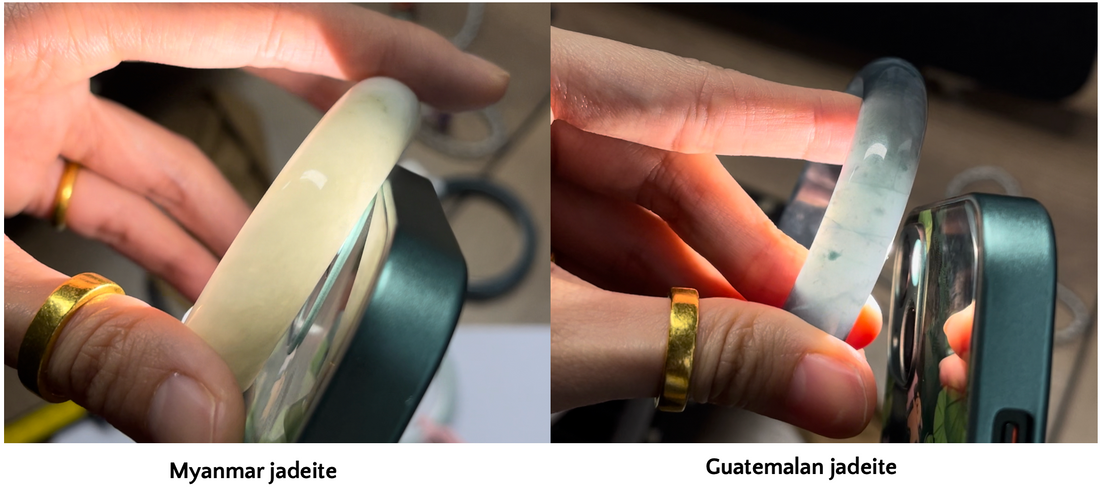
Zooming In: Jadeite under the Microscope
To the naked eye, jadeite reveals a world of color, texture, and luminosity—but beneath the surface, under magnification, lies a microcosmic universe that tells the story of its formation. In gemological labs, microscopic analysis is a key tool to distinguish jadeite’s origin, authenticity, and quality.
🔬 The Language of Inclusions
Inclusions—tiny mineral deposits, veins, or growth structures trapped within a gemstone—act like fingerprints. They reveal geological conditions, the presence of secondary minerals, and even whether the stone has been treated.
Myanmar jadeite, for instance, often contains:
-
Snowflake-like white inclusions, typically feldspar, intergrown with jadeite crystals
-
Brown flaky minerals, sometimes aligned along cleavage planes
-
Dark columnar or needle-like structures, scattered sparsely across the matrix
-
A tight, interwoven fibrous texture under high magnification
These characteristics contribute to the stone’s translucent-to-glassy appearance and signal high-pressure metamorphic formation.
🌫 Guatemala: A Heavier Texture
In contrast, Guatemalan jadeite reveals a completely different microscopic language:
-
Metallic-looking dark mineral clusters, often rich in iron or carbon
-
White thread-like veins or cloudy patches near the surface
-
Sooty or smoky inclusions, sometimes identified as amorphous carbon
-
A brecciated or granoblastic texture, reflecting more chaotic geological formation
Under reflected light, many Guatemalan samples show shimmering metallic luster, especially around inclusions, which can help differentiate them from Burmese jade even without spectroscopy.
🧠 Reading the Micro Clues
Gemologists analyze these microscopic features using:
-
Polarized light microscopy
-
Immersion techniques
-
Reflected and transmitted lighting
By mapping out the inclusion types and their distribution, experts can:
-
Estimate the stone’s origin
-
Identify potential treatments or enhancements
-
Evaluate overall quality and transparency
For example, abundant white feldspar inclusions suggest a natural Burmese origin, while metallic, soot-like inclusions lean toward Guatemalan provenance. Brecciated zones may hint at structural stress or tectonic mixing.
🔍 Why It Matters
Microscopic analysis goes far beyond aesthetics. It’s a scientific lens into a gem’s integrity, energy, and authenticity. For connoisseurs and collectors, these tiny internal patterns are what elevate jadeite from ornament to object of reverence.
In our next post, we’ll explore how spectroscopic tools—like infrared, UV-Vis, and Raman analysis—help pinpoint jadeite’s composition and origin even further.
